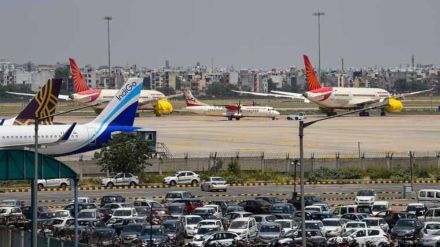Prime Minister Narendra Modi inaugurated a total of 15 airport projects on Sunday (March 10). PM Modi’s initiative encompasses the construction of 12 new terminal buildings for airports in Pune, Kolhapur, Gwalior, Jabalpur, Delhi, Lucknow, Aligarh, Azamgarh, Chitrakoot, Moradabad, Shravasti, and Adampur. Additionally, the foundation stone was laid for new terminal buildings at three airports – namely Kadapa, Hubballi, and Belagavi airports on Sunday.
The development of the 12 new terminal buildings comes at a total cost of Rs. 8,903 Crore, with a collective capacity to accommodate 615 lakh passengers annually. The AAI is also spearheading the construction of three new terminal buildings at Kadapa, Hubballi, and Belagavi Airports, with a total investment of Rs. 908 crore. Upon completion, these airports will collectively have the capacity to handle 95 lakh passengers annually, as confirmed by the government.
Enhancing aviation infrastructure
Azamgarh in Uttar Pradesh is set to witness the largest infrastructure addition, comprising a combination of new airports, expanded terminals, the laying of foundation stones for upcoming airports, and various related facilities.
It may be noted that the Airports Authority of India (AAI) has operationalized state-of-the-art new integrated terminal buildings at three cities – namely Chennai, Port Blair, Surat and Tiruchirappalli Airports, in FY 2023-24.
Additionally, inauguration ceremonies were held for new terminal buildings at Kanpur Airport, Rajkot International Airport, Tezu Airport, and Maharishi Valmiki International Airport in Ayodhya Dham. These projects aim to enhance passenger amenities and stimulate the local economy.
Furthermore, foundation stones were laid for new terminal buildings in Datia, Udaipur, Jodhpur, and Rajahmundry, catering to future demands.
All you need to know about the new terminal buildings, key feature
- Inauguration and foundation stone laying of 15 airport projects worth Rs 9,811 Crore, showcasing India’s civil aviation industry as a key driver of economic growth and a significant player in the global aviation sector.
- Terminal buildings equipped with modern passenger facilities including check-in counters, aerobridges, baggage conveyors, and ample concessionaire areas, as per the Prime Minister’s Office.
- Designs inspired by local heritage structures, reflecting the culture and heritage of the region, enhancing the travel experience for passengers.
- Incorporation of sustainability features such as double insulated roofing, energy-saving canopies, LED lighting, and solar power plants to meet GRIHA ratings, promoting eco-friendly practices.
- Increase in air connectivity expected to boost tourism, business, and education, while also generating employment opportunities crucial for regional economic growth.
- Strengthening of state economies in the long term, enhancing productivity and fostering business growth through improved air connectivity.
